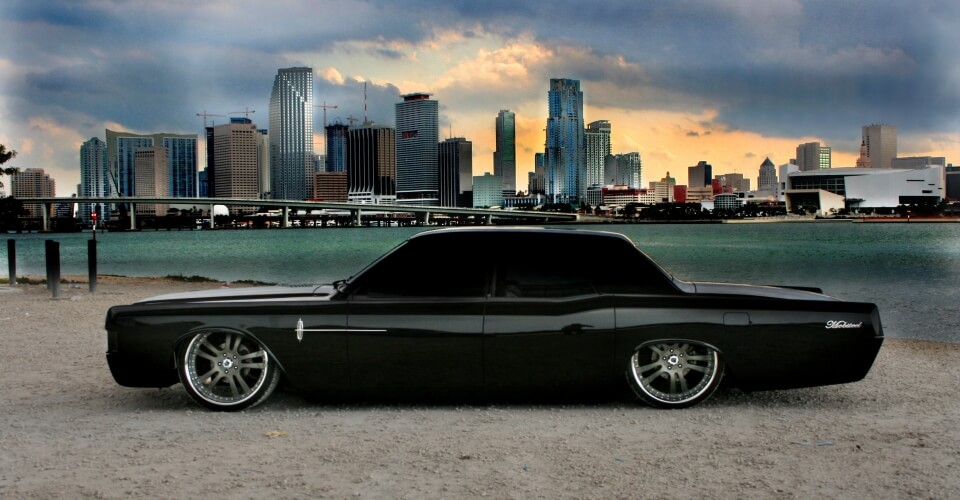Hot Rod Hubcaps and Trim Rings
20 Inch Smoothie Wheels - A wheel is known as a circular component that is intended to rotate while on an axle bearing. The wheel is one of the main different parts of the wheel and axle which is regarded as the six simple machines. Wheels, as well as axles, allow heavy objects to remain moved easily facilitating movement or transportation while supporting a load, or performing labor in machines. Wheels may also be useful for other purposes, say for example a ship's wheel, steering wheel, potter's wheel and flywheel.Common examples you find in transport applications. A wheel greatly reduces friction by facilitating motion by rolling together through axles. In order for wheels to rotate, a minute would need to be relevant to the wheel about its axis, either via gravity or by use of another external force or torque.The English word wheel hails from the Old English word hweol, hweogol, from Proto-Germanic *hwehwlan, *hwegwlan, from Proto-Indo-European *kwekwlo-, an expanded variety of the cause *kwel- "to revolve, maneuver ".Cognates within Indo-European include Icelandic hjól "wheel, tyre", Greek κύκλος kúklos, and Sanskrit chakra, link units both meaning "circle" or "wheel ".Precursors of wheels, generally known as "tournettes" or "slow wheels", were known in your Middle East by way of the 5th millennium BCE (one of the earliest examples was discovered at Tepe Pardis, Iran, and dated to 5200–4700 BCE). What you previously crafted from stone or clay and secured to the floor which includes a peg with the center, but required effort to turn. True (freely-spinning) potter's wheels were apparently active in Mesopotamia by 3500 BCE and perhaps since 4000 BCE, and also the oldest surviving example, that wasthat's evident in Ur (modern day Iraq), dates to approximately 3100 BCE.The first proof wheeled vehicles appears with the partner of your 4th millennium BCE, near-simultaneously in Mesopotamia (Sumerian civilization), the Northern Caucasus (Maykop culture) and Central Europe (Cucuteni-Trypillian culture), to be sure the question of which culture originally invented the wheeled vehicle continues to be unsolved.The first well-dated depiction to a wheeled vehicle (here a wagon — four wheels, two axles) is about the Bronocice pot, a c. 3500 – 3350 BCE clay pot excavated in a Funnelbeaker culture settlement in southern Poland.The oldest securely dated real wheel-axle combination, that from Stare Gmajne near Ljubljana in Slovenia (Ljubljana Marshes Wooden Wheel) is right now dated in 2σ-limits to 3340–3030 BCE, the axle to 3360–3045 BCE.2 kinds of early Neolithic European wheel and axle are known; a circumalpine version of wagon construction (the wheel and axle rotate together, just as Ljubljana Marshes Wheel), and this of one's Baden culture in Hungary (axle will never rotate). They both of them are dated to c. 3200–3000 BCE.In China, the wheel was certainly present together with the adoption of your chariot in c. 1200 BCE,although Barbieri-Low[9] argues for earlier Chinese wheeled vehicles, c. 2000 BC.
Related Images with Hot Rod Hubcaps and Trim Rings
Wheels Related Keywords amp; Suggestions Mobsteel Detroit Steel Wheels

Vintage centerline wheels for sale on US39;s largest classifieds sites

Wheel Vintiques 16 Series Gennie Chrome Cap Not Included By Wheel
US Mags Heavy Artillery U602 Wheels SoCal Custom Wheels
| TITLE: | Hot Rod Hubcaps and Trim Rings |
| IMAGE URL: | http://www.hobbycar.com/DSC2043%20copy.jpg |
| THUMBNAIL: | https://tse4.mm.bing.net/th?id=OIP.EqfU5in-33yMPQUxTby3FQEOEs&pid=Api&w=162&h=181 |
| IMAGE SIZE: | 139643 B Bs |
| IMAGE WIDTH: | 684 |
| IMAGE HEIGHT: | 760 |
| DOCUMENT ID: | OIP.EqfU5in-33yMPQUxTby3FQEOEs |
| MEDIA ID: | CE9F5BAD30EE4A21DBCF77EA128E2056C848DB5B |
| SOURCE DOMAIN: | hobbycar.com |
| SOURCE URL: | http://www.hobbycar.com/hubcaps2009.html |
| THUMBNAIL WIDTH: | 162 |
| THUMBNAIL HEIGHT: | 181 |
Related Images with Hot Rod Hubcaps and Trim Rings
Wheels Related Keywords amp; Suggestions Mobsteel Detroit Steel Wheels

Vintage centerline wheels for sale on US39;s largest classifieds sites

Tidak ada komentar:
Posting Komentar